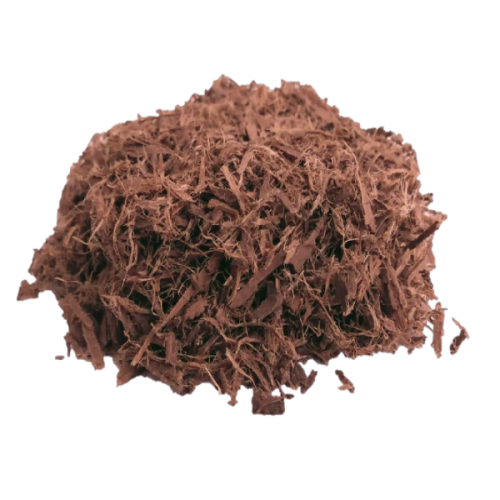Mimosa Hostilis Root Bark retains a substantial location in conventional tactics and modern botanical apps. This text explores the features, origins, and customary issues surrounding this exceptional plant materials, with a selected center on the prized Brazillian Mimosa Hostilis Root Barks.
What's Mimosa Hostilis Root Bark?
Mimosa Hostilis, scientifically referred to as Mimosa tenuiflora, can be a perennial tree indigenous to the northeastern area of Brazil and portions of Mexico. The root bark of the tree has become utilized for centuries by indigenous communities for various realistic and conventional uses. The internal root bark is made up of notable concentrations of tannins, alkaloids, and also other phytochemicals that lead to its distinctive Houses and apps.
The tree by itself is remarkably resilient, effective at surviving in bad soils and drought disorders. This hardiness contributes towards the sturdy mother nature of the bark and its chemical profile. When harvested sustainably, the outer root bark is carefully divided to obtain the precious interior bark, that is then dried and prepared for use.
Brazilian Mimosa Hostilis Root Bark: The Gold Regular
When discussing top quality in Mimosa Hostilis products, the Brazillian Mimosa Hostilis Root Barks are generally viewed as exceptional while in the botanical market place. Numerous aspects add to this status:
Ideal Growing Conditions
The specific soil composition, local climate, and ecosystem of Brazil's northeastern area create excellent circumstances for Mimosa tenuiflora to produce its complete chemical probable. The mineral-wealthy soils and certain sample of rainfall and sunlight During this place seem to improve the concentration of Energetic compounds in the root bark.Traditional Harvesting Know-how
In locations where by Mimosa Hostilis has long been applied usually, harvesters have formulated refined solutions for sustainable harvesting that preserves both the tree and also the potency of the bark. This understanding, passed down as a result of generations, makes certain that the bark is gathered at the proper time of yr and processed employing procedures that maintain its integrity.Distinctive Bodily Features
Brazilian Mimosa Hostilis Root Bark usually displays a wealthy reddish-brown to purple inner bark using a fibrous, dense texture. The visual traits typically function an Preliminary indicator of high quality, with skilled people recognizing the distinct visual appeal of bark from this location.
Prevalent Apps and Takes advantage of
The applications of Mimosa Hostilis Root Bark span both equally conventional and modern day contexts, while It is really essential to be aware of the lawful position of such works by using differs by country and jurisdiction.
Regular Craft and Exercise
Indigenous communities have Traditionally utilised Mimosa Hostilis Root Bark for building all-natural dyes for textiles, Using the bark creating beautiful shades of purple, burgundy, and deep brown. The tannin-rich Qualities also designed it beneficial for leather tanning and other sensible programs.Modern-day Botanical Investigation
Modern desire in Mimosa Hostilis Root Bark extends to numerous fields of botanical analysis, significantly learning its chemical composition and potential purposes. Scientists have recognized a number of interesting compounds inside the bark that warrant additional scientific investigation.Horticultural and Agricultural Works by using
In permaculture and sustainable agriculture, Mimosa tenuiflora is valued for a nitrogen-correcting species that may strengthen soil high-quality. The bark itself, when processed, can be used for a pure mulch or soil amendment in sure agricultural contexts.High-quality Evaluation and Identification

For all those working with Mimosa Hostilis Root Bark, knowing the best way to evaluate high quality is vital. Significant-quality content, significantly authentic Brazillian Mimosa Hostilis Root Barks, usually displays particular characteristics:
The Visible visual appearance should really demonstrate a clear distinction among the outer and internal bark, While using the interior bark exhibiting deep, vibrant colors. The material must have a characteristic earthy, somewhat sweet aroma, totally Premium Mimosa Hostilis free from musty or moldy notes. When processed, the bark ought to yield a good powder though retaining its fibrous construction until grinding. Adequately dried bark should be brittle but not dusty, indicating proper dampness articles.
Regularly Questioned Concerns (FAQs)
one. What's the difference between Mimosa Hostilis Root Bark from Brazil together with other areas?
Brazilian Mimosa Hostilis Root Bark is mostly regarded excellent a result of the best expanding problems in northeastern Brazil, which cause better concentrations of Energetic compounds. The standard harvesting techniques applied in this location also add to the overall high quality and potency of the ultimate product.2. How ought to I retailer Mimosa Hostilis Root Bark to maintain its quality?
Shop the bark inside a cool, dim, and dry place in an airtight container. Protection from mild, moisture, and Excessive temperature fluctuations should help maintain the bark's chemical integrity and prevent degradation of its Energetic elements.three. Is Mimosa Hostilis an endangered species?
No, Mimosa tenuiflora isn't currently stated as an endangered species. Actually, It is really known for its resilient growth and talent to prosper in difficult disorders. Even so, dependable harvesting techniques are still vital to ensure the sustainability of wild populations.4. Am i able to mature Mimosa Hostilis beyond its native habitat?
Though Mimosa tenuiflora thrives best in its indigenous tropical weather, it might be cultivated in similar environments. The tree calls for effectively-drained soil, an abundance of sunlight, and security from frost. Having said that, the chemical profile of cultivated specimens may well differ from wild-harvested Brazilian product.five. Exactly what is the legal standing of Mimosa Hostilis Root Bark?
The legal status may differ considerably by state and jurisdiction. In a few areas, the Uncooked bark is lawful to have, even though in Some others, precise extracts or preparations might be controlled. Often research and comply with community rules and rules just before buying or applying any botanical material.Understanding Mimosa Hostilis Root Bark, particularly the high quality Brazillian Mimosa Hostilis Root Barks, requires appreciation of its botanical characteristics, traditional context, and ideal purposes. No matter if for exploration, craftsmanship, or botanical study, this amazing plant materials continues to be a issue of interest across many fields, even though always within ideal authorized and ethical boundaries.